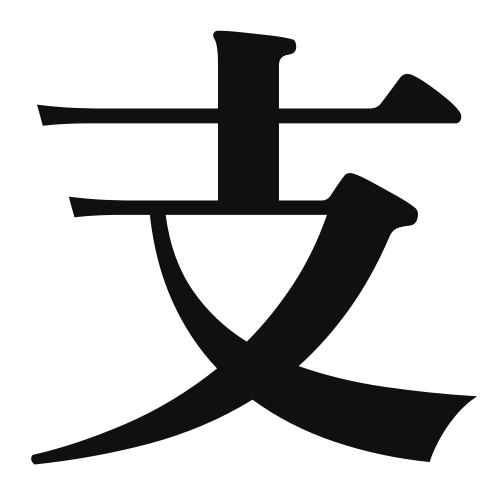1. Overview of Meaning
The kanji “支” (shi) generally means “to support” or “to branch out.” It conveys the idea of providing assistance or extending something, often in a structural or organizational context.
2. Formation and Radical
Formation of the Kanji: The kanji “支” is classified as a phono-semantic compound (形声文字), which means it combines a phonetic component with a semantic component. The left part suggests the meaning related to support, while the right part provides the pronunciation.
Radical: The radical for “支” is “支” itself, which is often associated with support or branching out.
3. Examples of Usage
Common Words and Phrases: Some frequently used words that include “支” are:
- 支援 (しえん, shien) – support, assistance
- 支店 (してん, shiten) – branch (of a company)
- 支払い (しはらい, shiharai) – payment
Example Sentences in Daily Conversation:
- このプロジェクトには多くの支援が必要です。
(This project requires a lot of support.) - 彼は新しい支店を開く予定です。
(He plans to open a new branch.)
4. Synonyms and Antonyms
Similar Kanji: A similar kanji is “助” (じょ, jo), which also means “to help” but emphasizes assistance rather than structural support.
Antonyms: An antonym for “支” could be “妨” (ぼう, bou), which means “to hinder” or “to obstruct,” representing the opposite of support.
5. Cultural and Historical Background
Relation to Japanese Culture: The concept of “支” is significant in Japanese culture, particularly in the context of community support and organizational structures. It reflects the importance of helping one another in society.
Proverbs and Idioms: One relevant proverb is “支え合う” (ささえあう, sasaeau), which means “to support each other,” highlighting the value of mutual assistance in relationships and communities.
